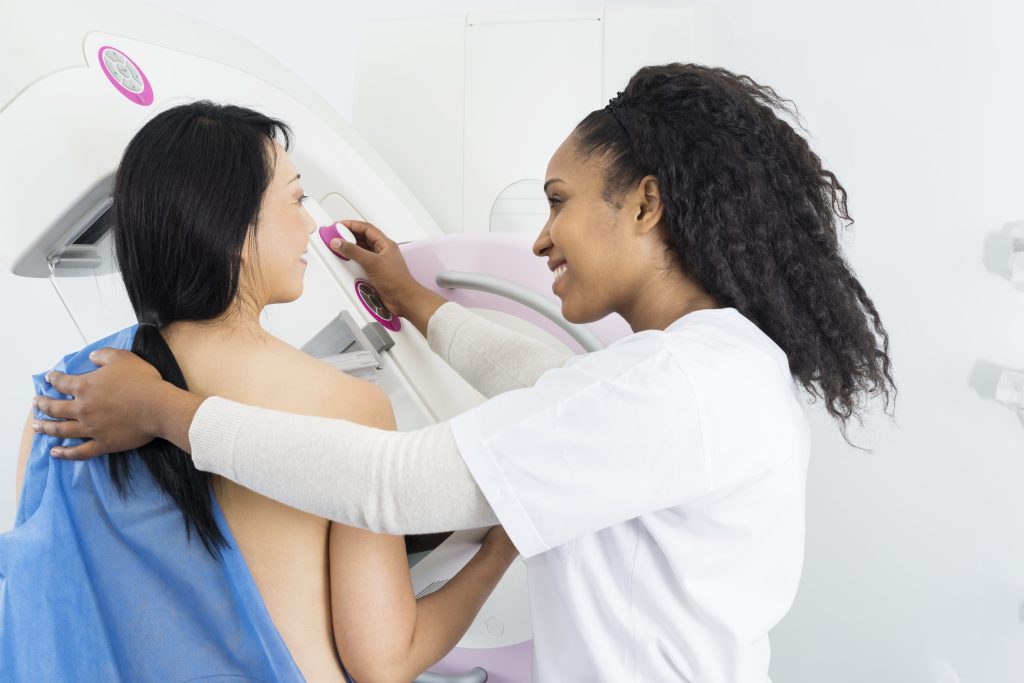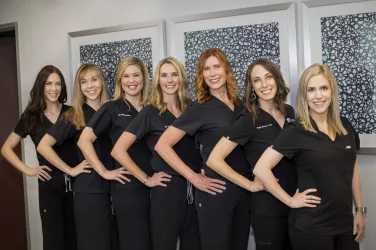
BY ANNETTE BROOKS
When you hear that a 15-minute, noninvasive imaging test could potentially save your life, chances are, you wouldn’t think twice about doing it. Yet every year, millions of women skip or postpone their annual screening mammogram despite knowing that one in eight women will be diagnosed with breast cancer in her lifetime.
Sure, it’s tempting to skip or postpone a mammogram. Life is busy, and for many of us, mammograms are uncomfortable during breast compression. Other things can sway us, too. Perhaps previous mammograms have been clear for years. Maybe you don’t have a family history of breast cancer. Or, since you feel nothing abnormal when doing a breast self-exam, you think you’re good. Well, here are some facts to consider.
- More than 75% of women with breast cancer have no family history of the disease, and less than 10% have a known gene mutation that increases risk.
- Mammograms can detect cancers before a lump is ever felt via breast self-exam or a clinical breast exam.
- According to the National Cancer Institute (NCI) Trusted Source, doctors most often diagnose breast cancer in females aged 55–64 years, with 62 being the median age.
Benefits of Early Detection
Breast cancer is more treatable than ever before, and your chance of survival increases if it’s detected at an early stage before it has spread. Per the American Cancer Society, the five-year survival rate for most breast cancer cases diagnosed early at the localized stage — Stage I and not having spread to lymph nodes or other places outside of the breast — is estimated at 99 to 100%. These are odds to celebrate.
Also, depending on your diagnosis (some breast cancers are extremely aggressive while others are not), early detection may mean you can choose less invasive and less extensive treatment options. You could, for example, be a candidate for lumpectomy versus mastectomy and radiation therapy without chemotherapy as I was.
Options like this are a big deal. They make treatment easier to get through and help ongoing post-treatment side effects be more bearable. Many of us pink sisters deal with side effects from surgery, lymph node removal, radiation therapy, and chemotherapy for years, if not our entire lives. And if you’re diagnosed with estrogen-positive breast cancer, the side effects from pharmaceutical drugs taken for years to block/reduce estrogen production are a supreme challenge for many survivors.
Breakthroughs in Breast Imaging
Breast imaging has come a long way since mammograms went mainstream decades ago.
- Breast-shaped compression surfaces such as SmartCurve help make mammograms more comfortable without compromising image quality.
- 3D mammography (digital breast tomosynthesis or DBT) makes it easier for doctors to catch breast cancer early and reduces the chances of a false positive.
- A breast MRI can locate some small breast lesions sometimes missed by mammography and is used to help detect breast cancer in women with breast implants and women with dense breast tissue.
Five-step Monthly Breast Self-Exam
Breast self-examination (BSE) is a useful and effective tool for checking changes in your breasts and should be part of your overall breast health strategy. Check out BreastCancer.org/symptoms/testing/types/self_exam for a complete step-by-step BSE and what to do if you find a lump. Please remember, however, that BSE is not a replacement for screening mammograms or seeing your physician for a clinical breast exam.









